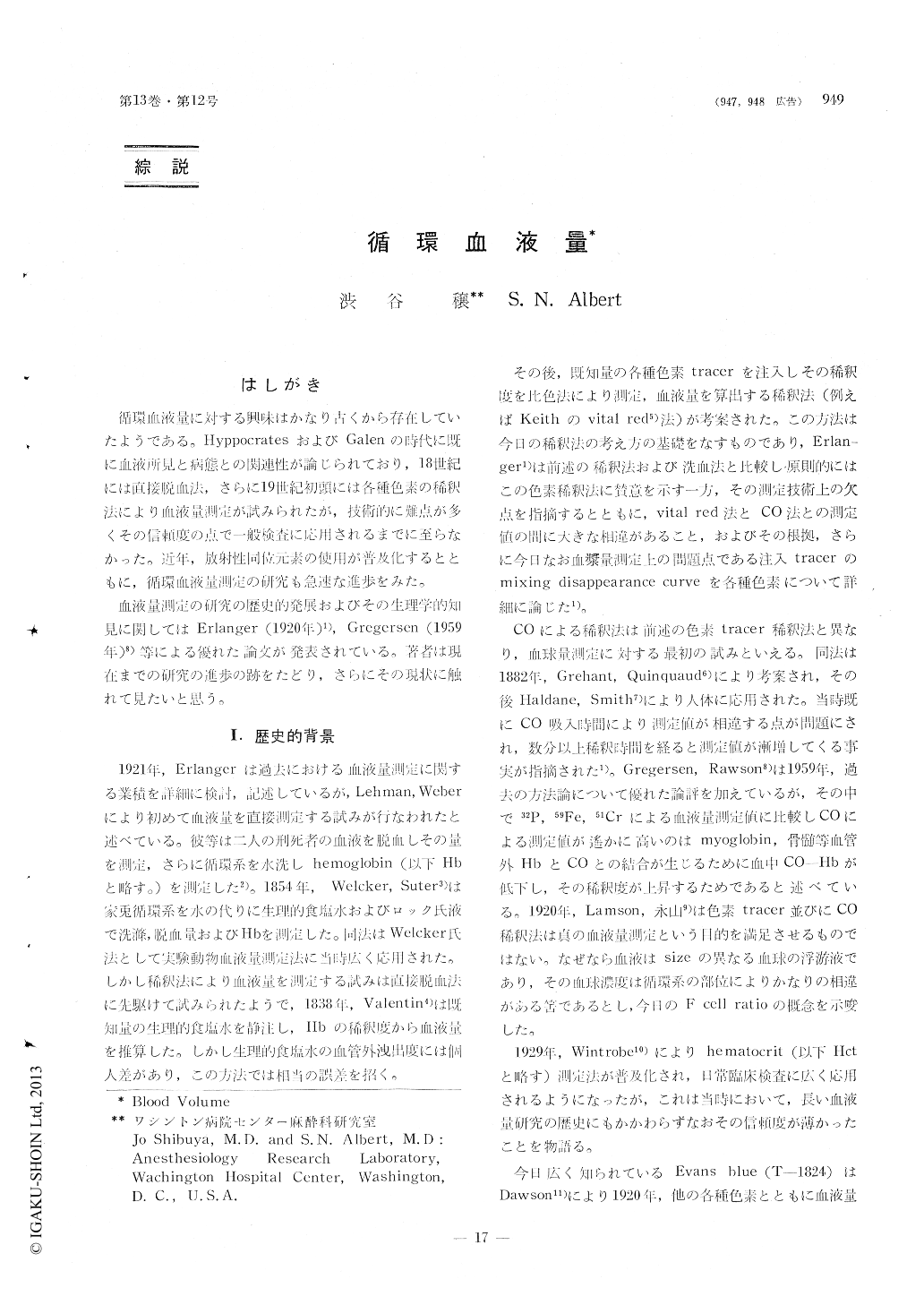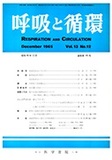Japanese
English
- 有料閲覧
- Abstract 文献概要
- 1ページ目 Look Inside
はしがき
循環血液量対する興味はかなり古くから存在していたようである。HyppocratcsおよびGalenの時代に既に血液所見と病態との関連性が論じられており,18世紀には直接脱血法,さらに19世紀初頭には各種色素の稀釈法により血液量測定が試みられたが,技術的に難点が多くその信頼度の点で一般検査に応用されるまでに至らなかった。近年,放射性同位元素の使用が普及化するとともに,循環血液量測定の研究も急速な進歩をみた。
血液量測定の研究の歴史的発展およびその生理学的知見に関してはErlanger(1920年)1),Gregersen(1959年)8)等による優れた論文が発表されている。著者は現在までの研究の進歩の跡をたどり,さらにその現状に触れて見たいと思う。
1. In order to estimate blood volume accuratcly, the plasma and red cell volume should be measured indcpendently with an appropriate tracer under stabilized hemodynamic conditions. For this purpose, dual tracer techniques are utilized, such as a combination of 51Cr tagged red cells to measure red cell volume, and R 125ISA to measure plasma volume.
2. Regardless of the tracer utilized, one important fact must be taken into account: Equilibration of tracer with the component of blood being measured.
3. When plasma tracers are utilized, one should take into account the extent of loss of tracer from the intravascular bed and extrapolate back to zero time.
4. The extent of dilution of a single tracer in blood does not designate blood volume. It only reflects the cxtent to which the tracer has been diluted in a specific cornponent of blood, the ratio of which, to total blood volume, varies.
5. Areliable guide for clinical evaluation is measurement of the red cell volume with 51Cr tagged red cells, which is independent of the F cell ratio. Total blood volume can be approximated to a realistic value when an average F cell ratio of 0.915 is taken into account in the calculations.
6. To improve accuracy in measuring blood volume, the hematocrit per cent as ditermined on the blood sample should be corrected for the amount of trapped plasma. Correction factors vary with the hematocrit ratio. Conversion tables are presented for the microhematocrit technique.
7. Predicted blood volume prcsented by several workers are by no means absolute values. Estimated blood volume should be considered as a reference basis for clinical judgement.
8. Fluctuationsin plasma volume are produced by factors which affect hemodynamic equilibration at the capillary level and by changes in tonicity of capacitance vessels.
9. Chronically ill patients have a reduced blood volume which should be corrected. Hematocrit or hemoglobin determinations in these cases are mislcading, The amount of deflcit. should be based on their original weight prlor to, its loss.
10. Further studies on measurement of the extracellular fluid space with radioactive tracers sucll as 75Selenate or 35Sulfate may elucidate some dynamic changes observed as cllanges in blood volulne.

Copyright © 1965, Igaku-Shoin Ltd. All rights reserved.


